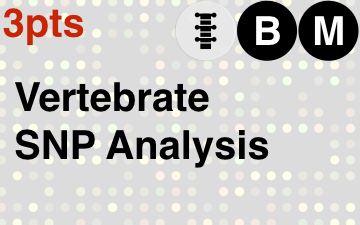In molecular biology and bioinformatics, SNP array is a type of DNA microarray which is used to detect polymorphisms within a population. Asingle nucleotide polymorphism (SNP), a variation at a single site in DNA, is the most frequent type of variation in the genome. Currently, there are around 85 million SNPs that have been identified in the human genome.[1]
The basic principles of SNP array are the same as the DNA microarray. These are the convergence of DNA hybridization, fluorescence microscopy, and solid surface DNA capture. The three mandatory components of the SNP arrays are:
An array containing immobilized allele-specific oligonucleotide (ASO) probes.
Fragmented nucleic acid sequences of target, labeled with fluorescent dyes.
A detection system that records and interprets the hybridization signal.
The ASO probes are often chosen based on sequencing of a representative panel of individuals: positions found to vary in the panel at a specified frequency are used as the basis for probes. SNP chips are generally described by the number of SNP positions they assay. Two probes must be used for each SNP position to detect both alleles; if only one probe were used, experimental failure would be indistinguishable from homozygosity of the non-probed allele.
(From: Wikipedia, June 2016)


